Ma Rainey's Black Bottom: 10 Behind The Scenes Facts You Didn't Know
As Oscar nominations draw closer, one movie that continues to get a lot of buzz is Ma Rainey's Black Bottom. The movie is set in the 1920s and takes place at a recording session for the successful and influential blues musician Ma Rainey (Viola Davis).
The movie has gotten huge acclaim, especially for the final performance from Chadwick Boseman as the band's ambitious and volatile trumpet player. Given the unique production and the legacy the movie already holds, there are some interesting behind-the-scenes facts for anyone who has an interest in Ma Rainey's Black Bottom.
10 The August Wilson Series

The movie is based on the play by acclaimed playwright August Wilson and there might be plenty more adaptations of Wilson's work coming to the big screen soon.
After directing, starring and producing Fences, another Wilson play, Denzel Washington made plans to make a series of movies based on Wilson's work. Washington serves as a producer on Ma Rainey and he next hopes to make The Piano Lesson, with his own son John David Washington starring and Barry Jenkins directing.
9 Director George C. Wolfe
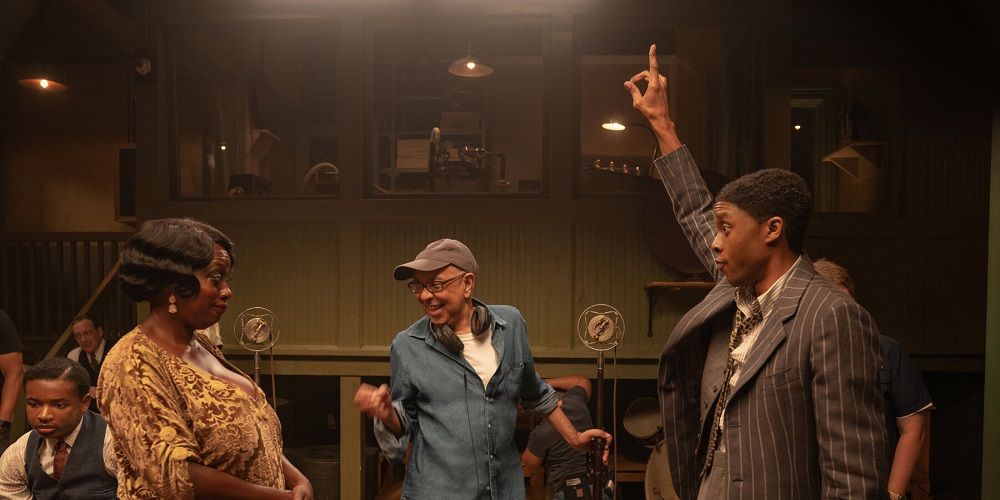
While Washington directed Fences, he was looking for someone else to helm Ma Rainey. According to Washington, given the play-like nature of the movie, he wanted a director who came from a theater background yet also had experience in movies.
He settled on director George C. Wolfe who brought an extra quality to the movie as well. Wolfe also had a wide knowledge of the music from this area the story is covering and had insights on how to capture the performances in an authentic way.
8 Viola Davis And August Wilson
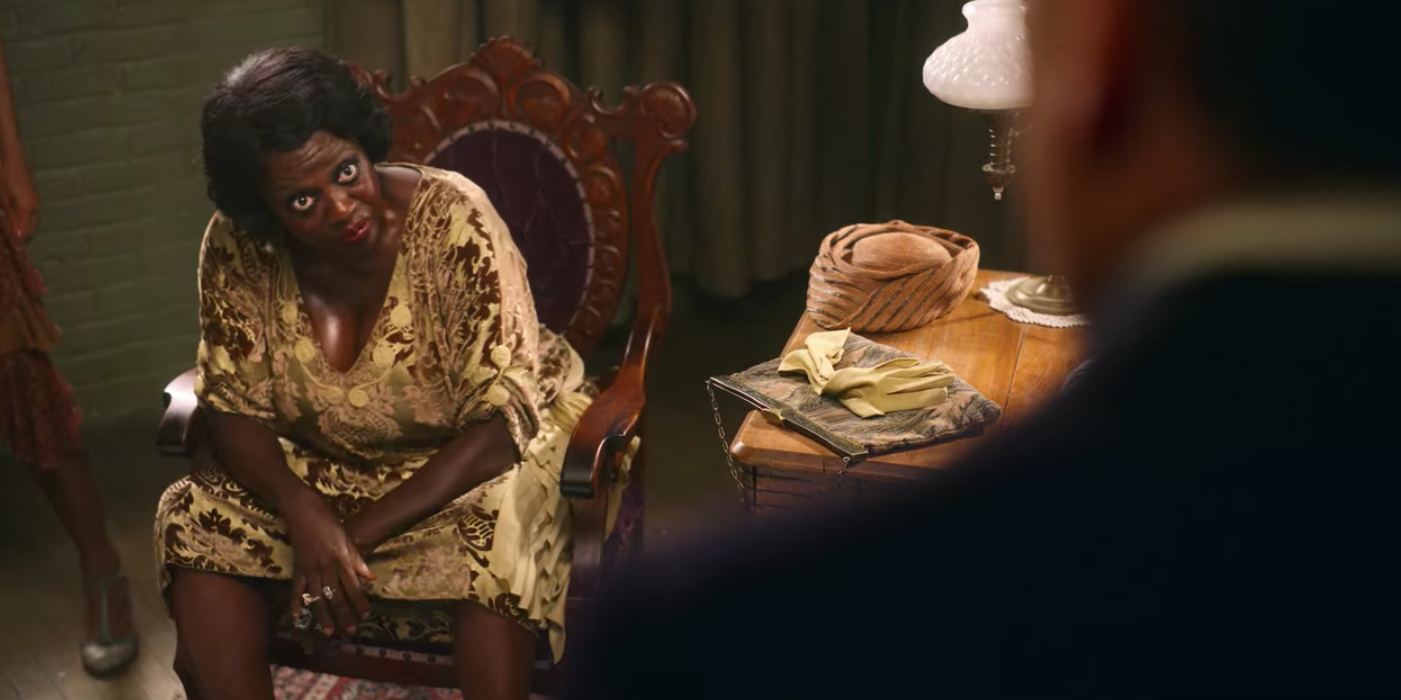
Viola Davis gives a powerful and transformative performance as Ma Rainey in the movie and she has a long history with Wilson and his work. Not only did Davis win an Oscar for her role in Fences as well as perform the part on Broadway, but Wilson's work had a huge impact on her when she was still a theater student.
Davis said that while she revered and admired the work of playwrights like William Shakespeare and Arthur Miller, she often felt like she was trying to fit herself into those worlds. When someone introduced her to Wilson's work, it felt like something she was meant to play.
7 Denzel Washington's History With Chadwick Boseman
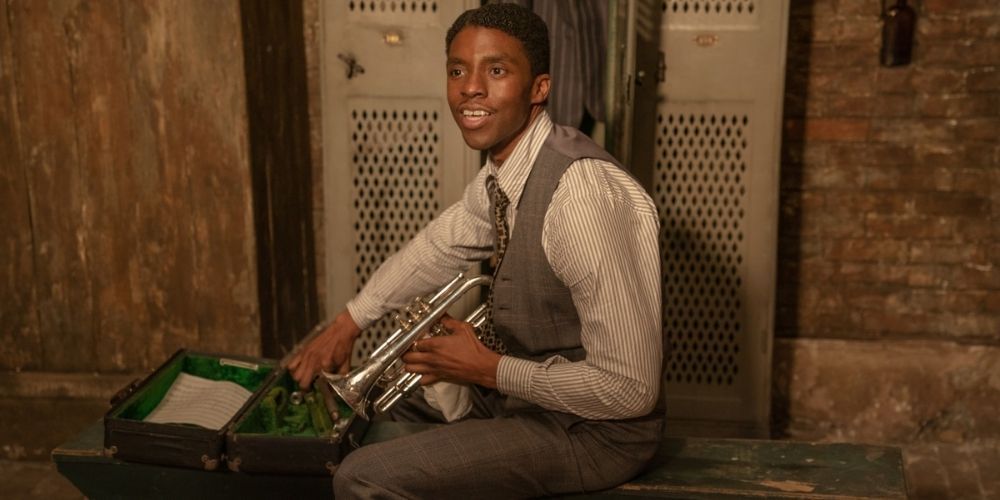
While producer Denzel Washington and star Chadwick Boseman never got the chance to work together on screen, they share an interesting history. Boseman has spoken about Washington's massive influence over the years, but their connection goes back even further.
When studying acting at Howard University, Boseman was one of nine students who were given the opportunity to attend a summer program at the British Academy of Dramatic Acting in Oxford and Washington was the one who paid the tuition.
6 Rehearsals
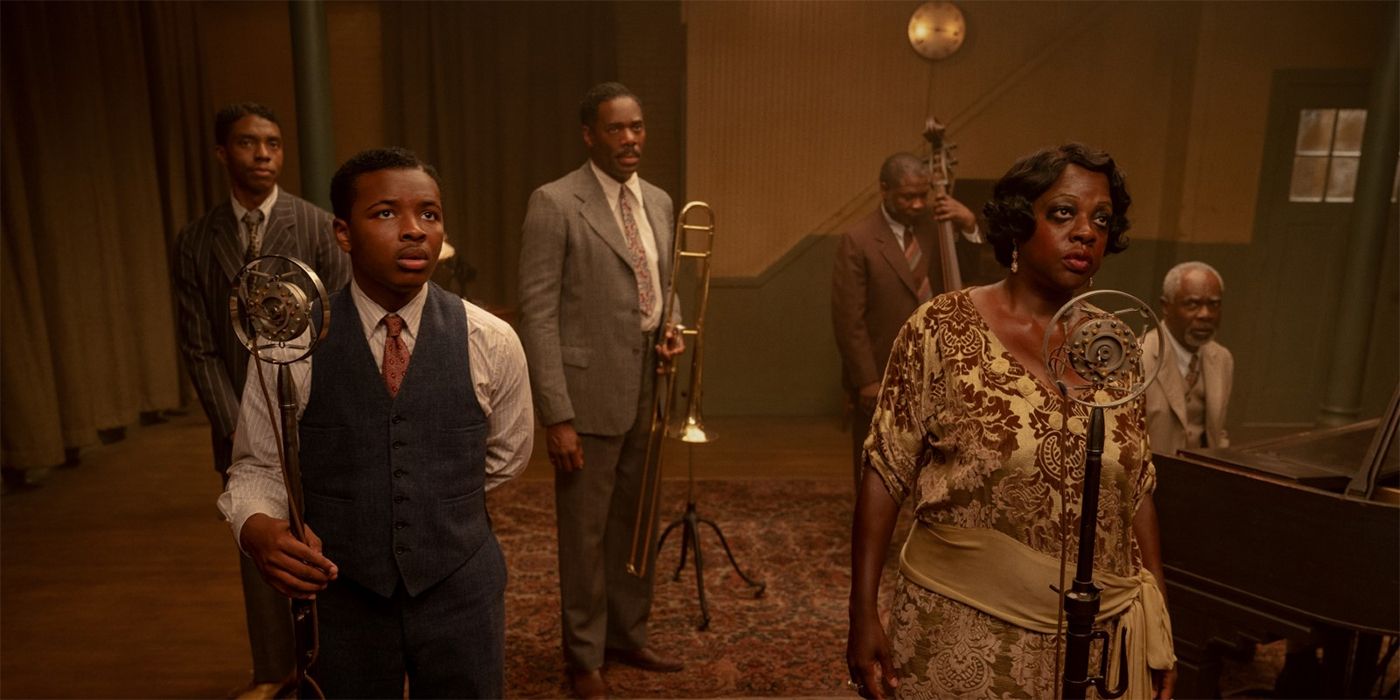
Though rehearsals are not a luxury every movie is afforded, Wolfe insisted this movie needed two weeks of rehearsals before they went in front of cameras. The actors were able to assemble together and run through the movie while also working at developing their characters.
Wolfe's reasoning for why this was so necessary was because Wilson's writing was so dense and powerful that he wanted the actors to get used to saying it aloud and working with it while also being able to find their characters beyond the dialogue.
5 Playing Real Instruments

While the actors knew the main importance of the movie was doing justice to the words Wilson wrote, the actors playing Rainey's band also thought it was important that they look professional and capable as musicians.
Each of the actors took lessons on how to play their respective instruments convincingly. Wolfe later joked that he made a smart choice hiring a bunch of over-achieving actors who showed up already having taught themselves considerably well.
4 The Makeup Job

Davis is almost unrecognizable in the lead role with a padded suit and heavy makeup. As it turns out, the distinct look is something that Davis herself pushed for when portraying to so-called "Mother of the Blues."
Davis and her makeup artist did extensive research into the era and Rainey herself to develop the right look. She also looked at Wilson's text and saw Rainey as a woman who liked to flaunt her high stature to others and used makeup as something of a mask.
3 Ma Rainey Near The End Of Her Career
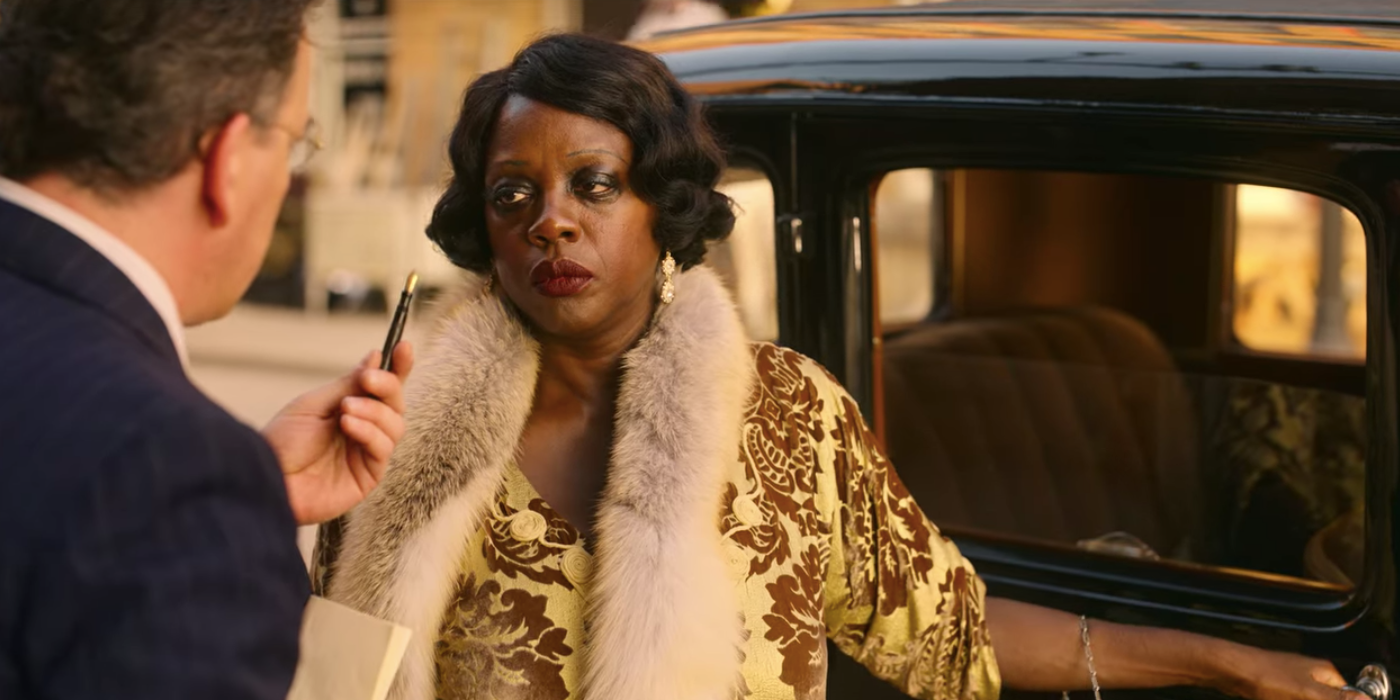
The movie depicts Rainey as a bit of a tough character to deal with. She is late to show up for the recording session, she is demanding of those around her, and she has little patience for anyone. However, this is an attitude Wolfe and Davis discussed at length.
Given the area the movie is set in, Rainey is close to the end of her career. As Davis saw it, this is a woman who has had to fight to be paid and respected every day of her career. As she sees the end coming, she is worn down yet still strong in her principles.
2 Breaking Down The Door

Most of the scenes involving the band members take place in the basement of the recording studio. Within this room is a jammed door with Levee (Boseman) keeps trying to open. Near the end of the movie, a frustrated Levee does finally get through the door, only to find an empty space.
Wolfe recalls while filming the scene, Boseman was so intense that he nearly broke the door in two. Not wanting to replace the door, Wolfe suggested Boseman tone it down for the next take, however, Boseman came at it with the same intensity.
1 Boseman's Death
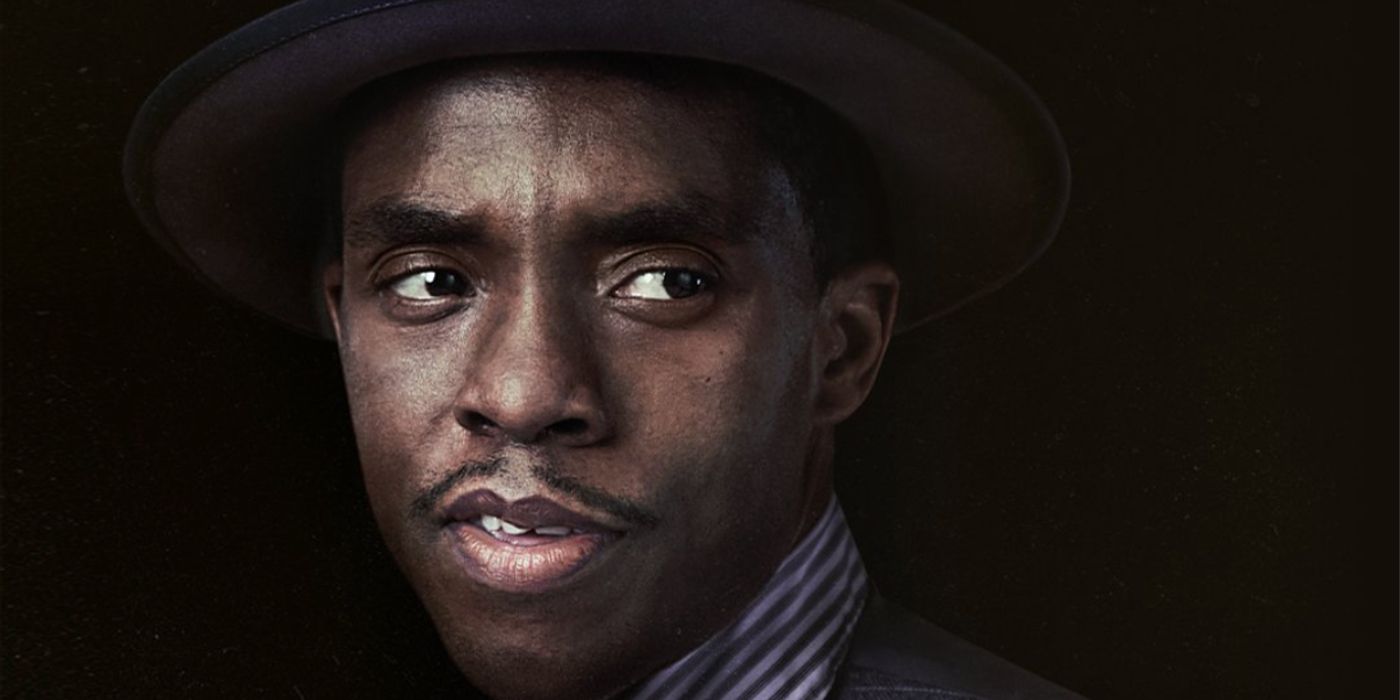
It is bittersweet that this movie will be remembered as Boseman's last performance as it is such a stunning piece of work that is a reminder of how tragically short his career was. Wolfe confirmed that he had no idea Boseman was sick during the production and, as evidence by him nearly breaking down the door, he showed no signs of slowing down.
Wolfe even remarked that he and Boseman began discussing future projects to potentially collaborate on in the future only for Wolfe to learn of Boseman's passing along with the rest of the world.
No comments: